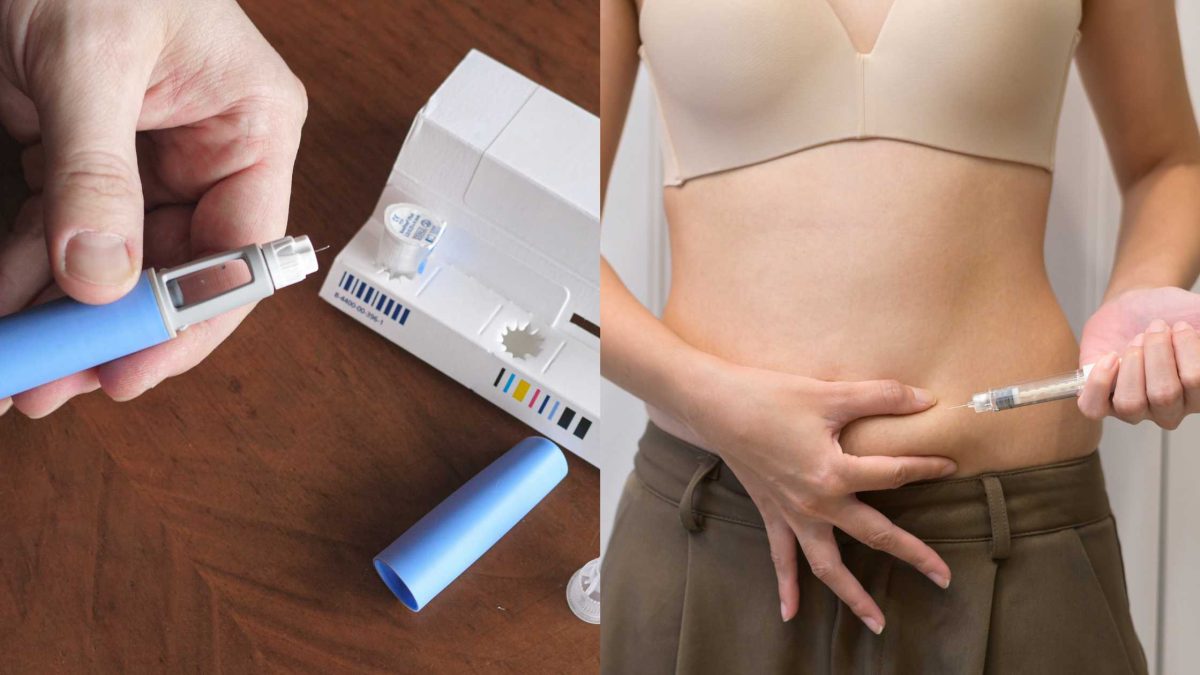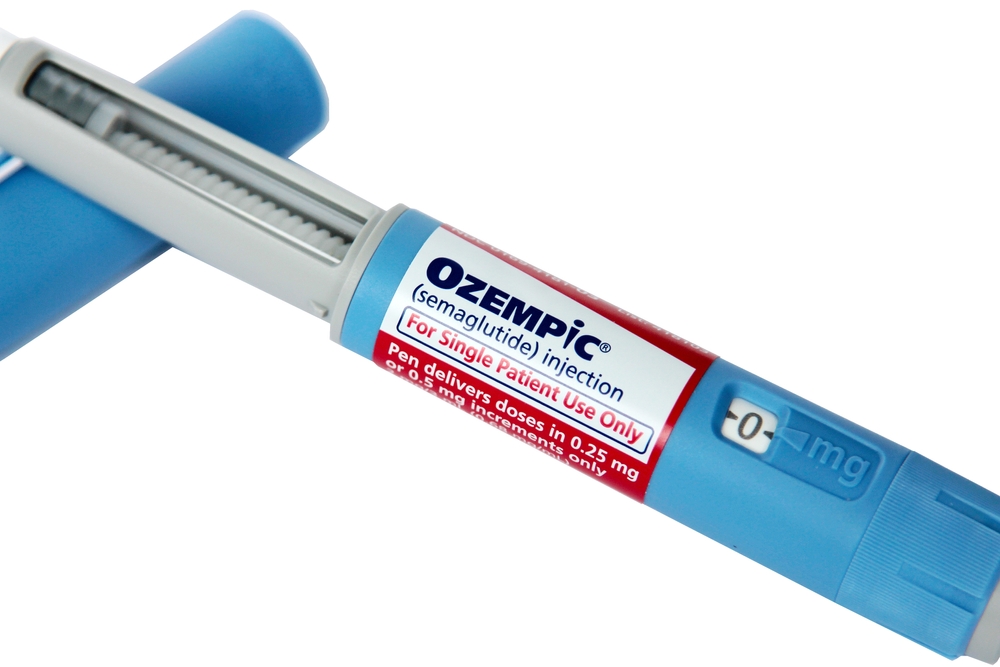Key Takeaways
-
Smoking and vaping harm skin on a cellular level and diminish skin tightening results by breaking down collagen and interfering with repair mechanisms. Vaping affects skin tightening results, so quit or cut back before treatment.
-
Nicotine causes vasoconstriction that limits oxygen and nutrient delivery, slowing healing and increasing complication risk. Skin tightening results include monitoring skin color and temperature and avoiding nicotine before and after procedures.
-
Free radicals and toxins from smoke and vapor produce oxidative stress and inflammation that speed up aging and reduce the lifespan of tightening results. Back up recovery with antioxidant-rich foods and antioxidants applied topically.
-
Both smoking and vaping impair wound healing and increase the risk of infection and scarring, typically necessitating extended recovery periods or supplementary treatments. Monitor healing milestones and check in with your practitioner early if progress stalls.
-
Vaping isn’t harmless for cosmetic recovery either because nicotine and many chemicals in aerosols constrict blood flow and damage skin architecture. Review product ingredients and discuss risks with your provider.
-
Steps to safeguard results
Quitting or pausing nicotine use around procedures, optimizing hydration and antioxidant intake, adhering to a pre- and post-treatment care plan, and utilizing cessation resources or support for long-term skin health.
Smoking and vaping diminish skin tightening results by destroying collagen and blood flow. Both accelerate skin aging and hinder healing following laser or RF procedures.
Nicotine constricts vessels and restricts oxygen, while chemicals increase inflammation and degrade connective tissue. Patients who quit nicotine pre- and post-treatment experience more defined, tighter results and quicker healing.
The body discusses science, timing, and how to make results better.
The Cellular Sabotage
About | The Cellular Sabotage Smoking and vaping sabotage skin function on the cellular level, sabotaging any skin tightening strategy. Cells that construct and mend skin encounter consistent chemical assault. Over time, those little, silent wounds accumulate and manifest in the mirror within years.
Cellular health is the foundation for quality cosmetic results. Without it, procedures provide diminished, less durable results.
1. Collagen Collapse
Nicotine and other toxins accelerate collagen degradation and decrease new collagen synthesis by around 18 to 22 percent versus non-smokers. Collagen loss results in sagging and deeper lines, particularly in the perioral and periorbital areas.
Less collagen production means radiofrequency, laser, or injectable-based tightening have less lattice to tighten. Aesthetic practitioners observe less lift and quicker relapse.
Collagen fibers are weakened and more brittle post-treatment, so skin can tear or exhibit uneven texture more readily. A table comparing collagen levels in smokers, vapers, and non-users would show staged decline: non-users highest, vapers intermediate, smokers lowest, with young vapers at notable risk because they lose collagen during prime production years.
2. Restricted Blood Flow
Nicotine is a vasoconstrictor. It shrinks the tiniest blood vessels and reduces the amount of oxygen and nutrients reaching the skin.
Bad circulation not only slows healing, but it dulls the visible results from tightening procedures. Tissue devoid of fresh blood heals sluggishly and tends to scar or produce patchy outcomes.
Observe skin color and temperature post-treatment. Cool, pale skin or delayed re-warming can indicate impaired perfusion and warrant increased monitoring.
3. Oxidative Damage
Free radicals in smoke and vapor lead to oxidative stress that damages cell membranes, DNA, and proteins. This speeds up aging and decreases the longevity of tightening effects.
Antioxidant stores in the skin decline as they quench radicals, rendering defenses vulnerable and repair sluggish. Consuming antioxidant-rich foods like berries, leafy greens, nuts, and foods high in vitamin C and E can aid in supporting recovery and should be included in post-care.
4. Compromised Healing
Smoking and vaping delay wound closure and raise infection risk after procedures. Slow healing causes more scarring, pigment alteration and poor tightening results.
The recovery can linger, and in some cases requires additional treatments to fix issues. Monitor healing benchmarks, such as wound-edge sealed, color normalized, and sensation restored, to detect lags and intervene.
5. Toxin Accumulation
Cigarette smoke and many e-liquids contain heavy metals, formaldehyde, acrolein, and other toxins that accumulate in skin. These compounds throw off detox pathways within cells and cause inflammation that exacerbates swelling post-procedure.
Toxins that have built up spur uneven discoloration and blotchiness. A list of common toxins in cigs and e-juice helps patients realize why quitting accelerates skin recovery.
Smoking Versus Vaping
Smoking and vaping impact skin health in ways that are relevant for tightening treatments. These habits alter blood flow, expose skin to injurious chemicals and heat, and can impact healing post treatments. Below are targeted comparisons and actionable tips to assist readers in balancing risks to aesthetic recuperation.
The Nicotine Problem
Nicotine constricts small blood vessels, reducing oxygen and nutrient delivery to skin. This narrowing reduces the speed of wound healing and collagen production. Both of these play a central role in skin tightening outcomes.
Compromised blood flow renders treatments such as radiofrequency, lasers, and surgical lifts less efficacious as tissue requires oxygen to remodel and firm properly. Short-term nicotine exposure pre- or post-procedure even raises complication rates and can blunt visible improvement.
Low-nicotine options still make a difference. Low” or “light” nicotine products hold enough nicotine to impact microcirculation. Nicotine patches and gums, e-cigarettes, and certain herbal smokes can extend recovery delays.
|
Product |
Typical nicotine (mg per use) |
|---|---|
|
Traditional cigarette (per cigarette) |
1.0–2.0 mg |
|
Cigar (per cigar) |
6–20 mg |
|
E-cigarette cartridge (each) |
0–20 mg* |
|
Nicotine patch (24 hr) |
7–21 mg |
|
Nicotine gum (each piece) |
2–4 mg |
*Varies widely by brand and user behavior.
The Chemical Profile
Cigarette smoke has thousands of chemicals, including carbon monoxide, tar, formaldehyde, and benzene. Most degrade collagen and elastin, generate free radicals, and amplify chronic dermal inflammation.
Vape aerosols contain less combustion byproducts. They do contain propylene glycol, vegetable glycerin, flavorings, and sometimes formaldehyde or acrolein, which can be formed at high temperatures. Certain flavor compounds such as diacetyl have been associated with tissue damage in other organs. Skin effects are less studied.
The unknowns are what count. New additives appear rapidly and no long-term skin safety data exists. Regular exposure to unproven compounds might damage barrier function, induce irritation, or modify inflammatory responses required for repair.
Watch labels and stay away from products that contain known irritants. When ingredient lists are murky, err on the side of caution and consider the product a danger to post-procedure skin.
The Thermal Effect
The inhaled heat of smoke and vapor increases skin surface temperature and dries the stratum corneum. This localized dehydration decreases elasticity in the skin temporarily and can exacerbate flakiness or tightness post treatment.
Repeated thermal episodes degrade lipids in the barrier layer and impede re-epithelialization. Post-procedure, heat can enlarge erythema, extend swelling, and intensify sensitivity.
Watch for signs like persistent redness, blistering, or slow closure of treatment sites. These signs suggest thermal injury or impaired healing and warrant medical review. Avoid any heat exposure near treated areas until fully healed.
Diminished Longevity
Smoking and vaping reduce the longevity of skin tightening results by damaging the very tissues that treatments work to enhance. Nicotine constricts blood vessels, reducing oxygen and nutrient delivery to the skin. Smoke and aerosol toxins increase oxidative stress and destroy collagen and elastin, so tightened skin loosens more quickly. Clinical data link longer smoking duration to worse skin. Each additional year of smoking is tied to a mean drop in skin quality of about 0.45 units, and heavier daily use makes that decline steeper. That loss in baseline skin quality decreases the window in which tightening procedures will provide noticeable, durable enhancement.
Continued exposure accelerates the return of sagging and wrinkles. Daily smoking or vaping creates noticeable lines around the lips and eyes in the course of months, which is a rapid comeback compared to non-users. For those who continue to smoke or vape after the procedure, connective tissue breaks down more quickly and the wrinkles come back sooner. Years of consumption can leave deeply rooted tissue scars; those fixed folds might not completely subside even after cessation. Quitting halts continued damage but does not always repair long-term alterations.
Maintenance requirements increase for users. Since outcomes wear off earlier, clinicians tend to suggest more regular boosts for smokers and vapers. Where a non-user might require a follow-up at 12 to 24 months, a smoker may require one at 6 to 12 months depending on the procedure and the patient’s usage pattern. Maintenance can be repeat noninvasive tightening, laser sessions, or injectables to restore volume and smoothness. These additional sessions increase cost and recovery time, and they can still result in reduced total gains because the deep tissue is still being exposed to toxins.
A straightforward timeline goes a long way in managing expectations on the patient and clinician sides. Non-users experience an initial tightening peak at 1 to 3 months, stable improvement for 12 to 24 months, and then gradual decline. Vapers have a similar peak, but decline often begins earlier, within 6 to 12 months, with perioral and periocular lines returning quickly. Current smokers show an earlier peak and faster drop-off, with visible relapse in months and greater risk of permanent lines after years.

Former smokers find that quitting improves repair capacity; collagen production shows significant gains within 4 to 8 weeks and may approach pre-smoking levels by about 12 weeks, and vitamin C levels recover to support collagen synthesis. Still, reversibility is a function of total exposure and age, as 41 to 60-year-olds display larger baseline declines and less resilient skin.
Patients should consider these schedules when selecting procedures and anticipate more frequent upkeep or prioritize quitting to maintain and prolong results.
The Cellulite Link
Nicotine and other toxins in cigarette smoke and many vaping aerosols constrict blood flow and damage the tiny vessels that nourish the skin and subcutaneous fat. When perfusion decreases, oxygen and nutrient supply fall as well. This impedes normal tissue repair and decreases the activity of fibroblasts, the cells that produce collagen and elastin.
As we age, collagen fibers become more disorganized and weaker, which allows fat lobules to push against the skin in such a way that creates the dimpled appearance that we’ve come to call cellulite. These same chemicals increase local inflammation. Inflammation activates enzymes that degrade extracellular matrix proteins, eroding the structural dermal scaffold that helps maintain the integrity of fat compartments.
Nicotine directly impacts collagen synthesis. It attaches to receptors on skin cells and informs them to make less collagen and activate collagen-destroying enzymes. This means that even when someone receives skin tightening or tissue remodeling treatments, their intrinsic collagen deficiency dampens the outcome.
For instance, a noninvasive radiofrequency procedure depends on healthy collagen to contract and rewire tissue. If collagen turnover is compromised, treatments yield less tightening and the improvement fades faster. Vaping goods differ significantly in formulation, but a lot contain nicotine as well as solvents or flavorings that might disrupt microcirculation and cell function, so they might have effects similar to smoking.
Smoking and vaping alter fat distribution and skin thickness. Chronic exposure is associated with a thinner dermis and distortion of fat compartment shape, rendering cellulite more apparent and more recalcitrant to mechanical or energy-based treatments. Patients who continue to smoke or vape after a tightening procedure tend to heal more slowly, bruise more, and demonstrate less visible contour change.
Clinical and practitioner reports routinely find less efficacy and durability of effect in users than nonusers. Lifestyle factors that commonly contribute to cellulite include smoking and vaping:
-
Sedentary behavior and low muscle tone
-
High-sodium diet and fluid retention
-
Excess body fat and weight fluctuation
-
Hormonal changes (estrogen shifts)
-
Poor hydration and low dietary protein
-
Chronic stress and poor sleep quality
-
Tight clothing that restricts circulation
By targeting these elements, you make the treatment more responsive. For example, by adding more daily movement and strength work, you can actually help to firm up the underlying tissue which can minimize the appearance of dimples. Lowering salt, increasing protein, and hydrating your tissues helps.
Stopping nicotine use before and after a procedure yields measurable benefit, including better circulation, more robust collagen rebuilding, and fewer complications. If cessation is not an option, talk timing and risk with your provider and potentially delay elective tightening until nicotine exposure is minimized.
A Personal Perspective
Smoking and vaping alter skin healing and skin tightening treatments. A lot of folks anticipate a definite, rapid outcome from processes. Reality strays because tobacco and nicotine products constrict blood flow, inhibit collagen repair, and cause inflammation. Here are personal and clinical perspectives on why habits count and what both patients and practitioners encounter.
The Patient’s Dilemma
Some patients share clear stories. A woman in her 40s had a midface lift and kept vaping. Bruises lasted longer and the skin felt lax months after. One 30-something smoker came back a whopping three times for touch-ups after a neck procedure, as scar tissue and sluggish healing blurred the initial result.
These stories feature slow healing, additional appointments, and increased expense. It’s difficult to balance the cosmetic with the quitting. Nicotine eases anxiety for others, so the thought of quitting before a procedure seems like giving up a crutch. For others, the timeline for quitting seems too long: many procedures ask for weeks of abstinence.
That friction generates emotional turmoil and back-asking. Fear of failure can drive transformation. Patients who experienced lukewarm results typically attempted quitting afterwards. Motivation from hearing about follow-ups I wanted less of and peers achieving better outcomes is important.
Nothing like some candid conversation with a practitioner to be helpful. Revealing cigarettes, pods, or patches allows clinicians to prepare, recommend, or postpone treatment as necessary.
-
Pros and cons of continuing smoking or vaping during cosmetic care:
-
Pro: Short-term stress relief may make appointments easier to face. Not quitting can feel less disruptive.
-
Con: Higher risk of infection and poor wound healing reduces final tightening effect.
-
Pro: Avoids withdrawal symptoms that may affect mood or sleep pre-procedure.
-
Con: Greater chance of visible scarring, loss of skin elasticity, and need for revisions.
-
Pro: No added effort or costs for cessation aids.
-
Con: Long-term costs rise due to repeated treatments and slower recovery.
-
The Practitioner’s Challenge
Clinicians see patterns: smokers and vapers tend to have variable outcomes and longer recovery. That necessitates specialized protocols like prolonged pre-op cessation windows, adjusted anesthesia plans, and increased post-op monitoring.
Navigating expectations becomes core, and crisp pre-consent, evidence-based counseling becomes the best way to minimize conflict. Pre-procedure screening must incorporate questions regarding vape device type, frequency, and nicotine level.
Cotinine type tests can verify use, but usually a straightforward, respectful chat does the trick. Recording habits and results enables clinics to polish suggestions. Tracking which patients did or didn’t quit and correlating that with healing metrics makes future advice more robust and pragmatic.
Proactive Measures
Prior to, in the course of, and after skin-tightening treatments, take definitive steps to safeguard skin function and enhance results. This chapter details preemptive checkups, healing care, and long-term lifestyle adjustments that help maintain collagen, minimize complications, and increase the likelihood of visible progress.
Pre-Treatment Protocol
Patients must quit tobacco and vaping for a set period leading up to procedures. Two to four weeks is the usual recommendation, but the longer they can abstain, the better the perfusion and risk profile. If you haven’t given up completely, try to cut down on the number of cigarettes you smoke per day and how long you smoke for in the lead up, as even this reduces the skin degradation rate.
Hydration and antioxidants build resilience. Hydrate well, think topical hyaluronic acid and oral vitamin C, and talk about proven antioxidant supplements with your clinician. Stay away from exfoliation treatments for approximately 2 weeks leading up to some procedures in order to maintain the barrier.
Clinicians should evaluate baseline skin quality, nicotine exposure, vascularity, and risk for delayed healing. Look for circulation problems, blood-thinning medications, and previous sun damage. Write down realistic expectations as well, particularly if the smoking legacy is long. Decades of smoking can still leave permanent lines, though they improve after quitting.
Create a step-by-step pre-treatment plan: set a quit or reduction goal date, list permitted skincare products, schedule hydration and supplement routines, and instruct on sun avoidance. Minimize outdoor activities between 10:00 and 16:00 and begin regular sunscreen use immediately.
Post-Treatment Care
Smoking and vaping must be avoided during healing, as nicotine is a vasoconstrictor that limits oxygen delivery to the site and increases the risk of infection and delayed healing. Many clinicians recommend waiting 2 to 4 weeks after treatment.
Employ topical antioxidants and mild cleansers to aid healing. Use antioxidant serums and sunscreen as soon as the practitioner allows. Patients usually return to their normal skincare regimen 48 to 72 hours post-treatment with some instructed to avoid sunbeds and direct sun for 72 hours to minimize inflammation.
Watch for delayed healing signs: increased redness, pain, pus, or nonhealing areas. Report these early. Follow a daily care schedule: morning gentle cleanse, antioxidant serum, broad-spectrum sunscreen (reapply every 2 to 3 hours if exposed), evening gentle cleanse and repair cream, plus hydration and sleep.
Cessation Support
Provide resources: referrals to smoking-cessation programs, counseling, nicotine replacement therapy, and digital trackers. About: Proactive Measures Little, practical steps help. Set realistic quit goals, track your daily progress, and scale back cigarettes incrementally when necessary.
Explain benefits: Quitting can start to restore collagen production and skin quality within weeks. This motivates continued effort. Create support groups or buddy systems for accountability and share strategies like timed nicotine patches, phone-based coaching, or peer check-ins.
Checklist — Before: Stop or reduce smoking for two to four weeks, hydrate, start antioxidants, avoid exfoliation. During: Avoid smoking entirely, protect from sun for seventy-two hours, use gentle care. After: Resume routine after forty-eight to seventy-two hours, use sunscreen frequently, report problems, continue cessation plan.
Conclusion
Smoking and vaping damage skin and diminish the benefits of tightening procedures. Both restrict circulation, deplete oxygen, and damage collagen. This leads to more sag, slower healing, and shorter results. A smoker might experience quick dissipation post-treatment. A vaper can experience milder but genuine setbacks. Small changes help: skip nicotine before and after procedures, keep skin clean, eat protein and vitamin C, and use sunscreen. One clear choice speeds recovery and holds results longer: stop nicotine use. For assistance, chat with your provider about timelines and support options such as counseling or nicotine replacement. Want to safeguard your investment and achieve longer-lasting results? Schedule a consultation and map out a definitive, smoke-free way forward.
Frequently Asked Questions
Does smoking affect skin tightening results after treatments like radiofrequency or lasers?
Yes. Smoking decreases blood flow and collagen, which impedes healing and diminishes skin tightening results. Quitting at least four weeks before and after treatment enhances results.
How does vaping compare to smoking for skin tightening results?
Vaping still exposes skin to nicotine and inflammatory chemicals. It messes with collagen and healing, so outcomes are worse than non-users. Steer clear of nicotine pre and post-op.
How long should I stop smoking or vaping before a skin-tightening procedure?
Try to cease nicotine 4 to 8 weeks before and a minimum of 4 weeks after. The longer you stay away, the better your circulation, collagen repair, and treatment results.
Can smoking or vaping reverse results after a successful skin-tightening procedure?
Yes. Ongoing nicotine use will speed collagen breakdown and bad healing, which can diminish or undo tightening results over time. Long-term quitting maintains results.
Does smoking or vaping increase the risk of complications from skin-tightening treatments?
Yes. They both raise the risk of things such as delayed healing, infection, scarring, and uneven results because they hinder blood flow and reduce immune function. We have to know about any smoking or vaping; it will affect the results of the skin tightening.
Will quitting smoking or vaping improve my skin’s natural elasticity?
Yes. Quitting enhances circulation and collagen production over months, contributing to progressive skin tightening results. The longer you are nicotine-free, the better the benefits.
Are there safer alternatives to nicotine that won’t affect skin-tightening outcomes?
Nicotine-free options such as behavioral support, nicotine-free patches, and professional cessation programs assist. Always discuss alternatives with your clinician to maximize healing and outcomes.



















